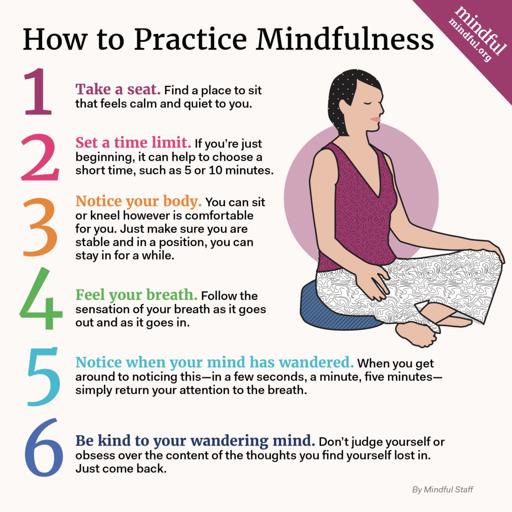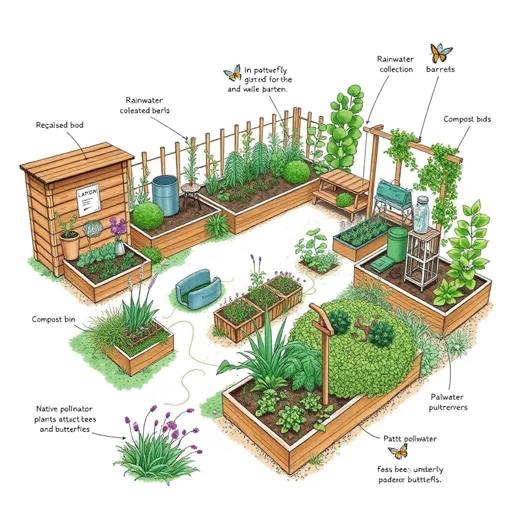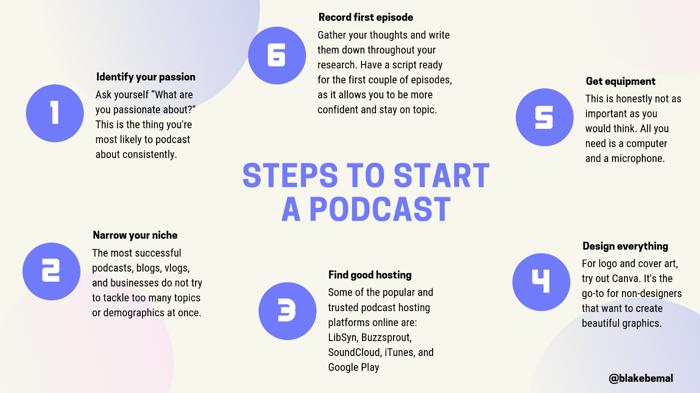How To Practice Mindfulness Anywhere You Go
Practicing Mindfulness Anywhere: A Comprehensive Guide

Frequently Asked Questions
You can practice mindfulness by incorporating it into your daily activities. Focus on your breath during mundane moments or practice mindful listening in conversations. Even short moments of awareness can make a difference.
Mindfulness can reduce stress, enhance emotional regulation, improve focus, and promote a greater sense of well-being. It helps cultivate a better relationship with oneself and the world around us.
Step by Step Guide
1
Understanding Mindfulness
Mindfulness is the practice of being present in the moment, focusing on what you're experiencing without distraction or judgment. To practice mindfulness, you need to cultivate awareness of your thoughts, emotions, and sensations.
2
Start with Breath Awareness
Begin your mindfulness journey by focusing on your breath. Take a few moments to inhale deeply and exhale slowly. Pay attention to how your body feels as you breathe in and out. This can be done almost anywhere.
3
Use Mindfulness Cues
Identify triggers or cues in your environment that remind you to be mindful. This could be the sound of a bell, your smartphone notification, or even a specific scent. When you notice this cue, pause and become aware of your surroundings and your feelings.
4
Engage Your Senses
To practice mindfulness, engage your senses intentionally. Focus on what you can see, hear, smell, taste, and touch. For example, if you’re walking, feel the ground beneath your feet, notice the breeze on your skin, and observe the colors around you.
5
Incorporate Mindfulness into Daily Activities
Integrate mindfulness into mundane tasks. While washing dishes, be fully present with the sensation of water and the weight of the dishes. When eating, savor each bite by focusing on flavors and textures rather than multitasking.
6
Practice Mindful Listening
During conversations, practice mindful listening. Instead of planning your response while someone is talking, focus fully on what they’re saying. Acknowledge their feelings and perspectives without forming a judgment.
7
Embrace Nature
Whenever possible, spend time in nature. Take a walk in a park, listen to the rustling leaves, and notice animals. Being in natural settings can enhance your mindfulness practice and help you feel more grounded.
8
Utilize Technology Mindfully
Use mindfulness apps and guided meditations to support your practice. Set aside time each day to listen to a meditation session that suits your needs, helping you to remain present and centered.
9
Create a Mindfulness Journal
Start a mindfulness journal where you can jot down your experiences and insights. Reflecting on your thoughts and feelings can deepen your understanding of your mind and enhance your mindfulness practice.
10
Seek Mindfulness in Movement
Whether you practice yoga, tai chi, or even go for a run, maintain a mindful approach by paying close attention to your body and its movements. This can promote both physical health and mental clarity.
11
Be Grateful
Incorporate gratitude into your mindfulness practice. Take a moment each day to acknowledge three things you’re grateful for. This shifts your mindset to positivity and awareness of the good around you.
12
Practice Self-Compassion
Mindfulness includes being kind to yourself. Accept your thoughts and feelings without judgment. When faced with negative self-talk, challenge yourself to respond with compassion rather than criticism.
13
Set Intentions for Mindfulness
Start each day by setting an intention related to mindfulness. This could be focusing on being present or practicing patience. Having a clear intention can guide your daily actions.
14
Connect with Others Mindfully
If you’re with friends or family, practice mindfulness together. Engage in activities like mindful eating, walking, or sharing thoughts on mindfulness. This community practice can enhance your experience.
15
Explore Mindfulness Retreats
For deeper immersion, consider attending mindfulness retreats or workshops. These can offer extensive training in mindfulness practices and foster a supportive environment.








